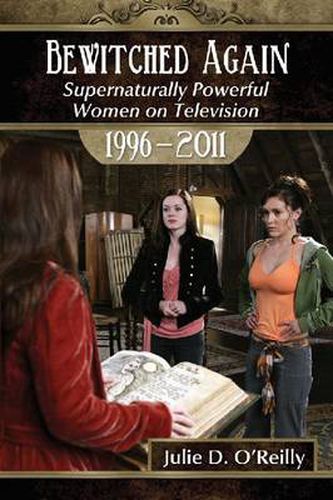Readings Newsletter
Become a Readings Member to make your shopping experience even easier.
Sign in or sign up for free!
You’re not far away from qualifying for FREE standard shipping within Australia
You’ve qualified for FREE standard shipping within Australia
The cart is loading…






This title is printed to order. This book may have been self-published. If so, we cannot guarantee the quality of the content. In the main most books will have gone through the editing process however some may not. We therefore suggest that you be aware of this before ordering this book. If in doubt check either the author or publisher’s details as we are unable to accept any returns unless they are faulty. Please contact us if you have any questions.
Starting in 1996, U.S. television saw an influx of super human female characters who could materialise objects like Sabrina the Teenage Witch, defeat evil like Buffy the Vampire Slayer and have premonitions like Charmed Phoebe. The extraordinary abilities of these women showed resistance to traditional gender roles–while the super women experienced infringements on their abilities in ways super powered men did not.
Supernatural heroines have remained on television, including the heavenly connected Grace (of Saving Grace), telepathic Sookie (of True Blood), and magical Cassie (of The Secret Circle). These more recent characters also face numerous constraints on their powers. As a result, superpowers become a narrative technique to diminish these characters, a technique that began with television’s first super powered woman, Samantha (of Bewitched). They all illustrate a paradox of women’s power: are these characters ever truly powerful, much less super powerful, if they cannot use their abilities fully? The television superwomen have endured as a metaphor for women trying to
have it all,
as their travails parallel those of their off-screen counterparts.
$9.00 standard shipping within Australia
FREE standard shipping within Australia for orders over $100.00
Express & International shipping calculated at checkout
This title is printed to order. This book may have been self-published. If so, we cannot guarantee the quality of the content. In the main most books will have gone through the editing process however some may not. We therefore suggest that you be aware of this before ordering this book. If in doubt check either the author or publisher’s details as we are unable to accept any returns unless they are faulty. Please contact us if you have any questions.
Starting in 1996, U.S. television saw an influx of super human female characters who could materialise objects like Sabrina the Teenage Witch, defeat evil like Buffy the Vampire Slayer and have premonitions like Charmed Phoebe. The extraordinary abilities of these women showed resistance to traditional gender roles–while the super women experienced infringements on their abilities in ways super powered men did not.
Supernatural heroines have remained on television, including the heavenly connected Grace (of Saving Grace), telepathic Sookie (of True Blood), and magical Cassie (of The Secret Circle). These more recent characters also face numerous constraints on their powers. As a result, superpowers become a narrative technique to diminish these characters, a technique that began with television’s first super powered woman, Samantha (of Bewitched). They all illustrate a paradox of women’s power: are these characters ever truly powerful, much less super powerful, if they cannot use their abilities fully? The television superwomen have endured as a metaphor for women trying to
have it all,
as their travails parallel those of their off-screen counterparts.